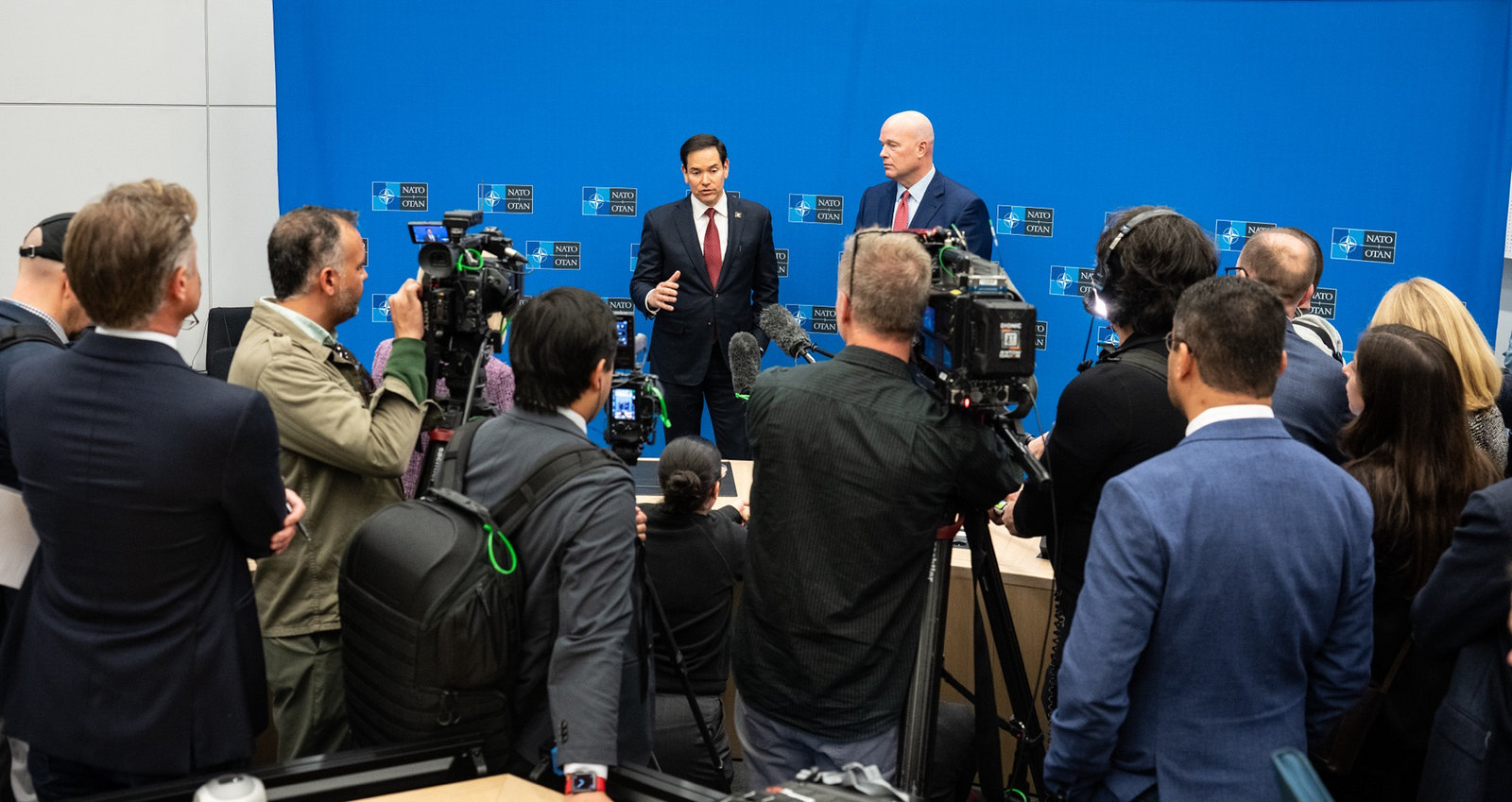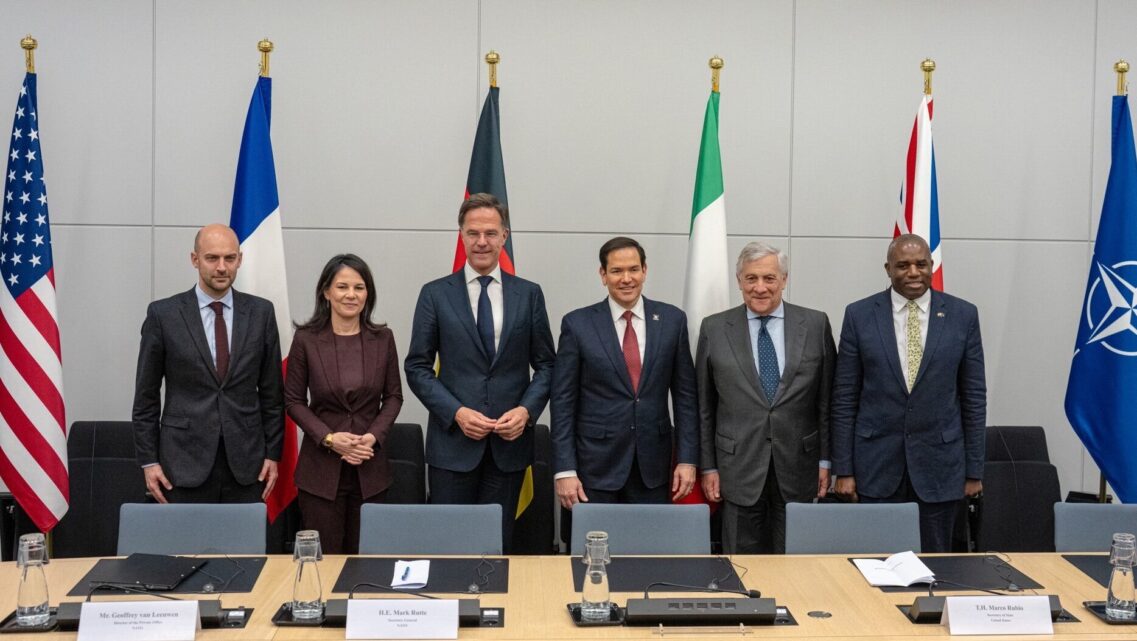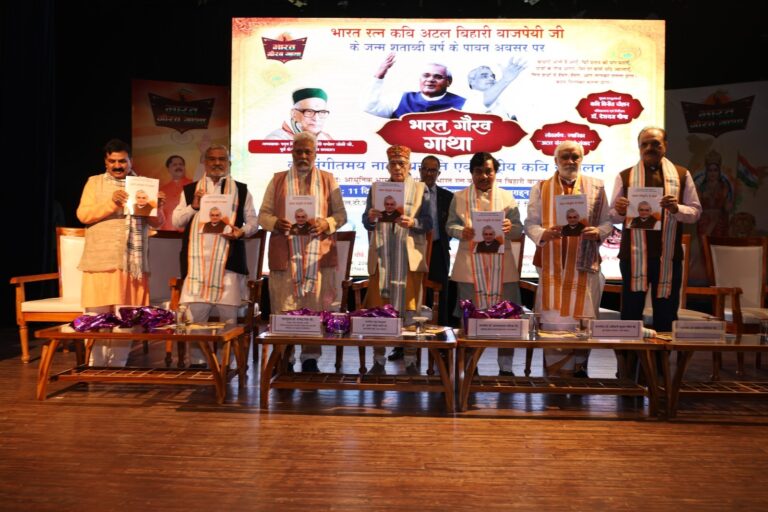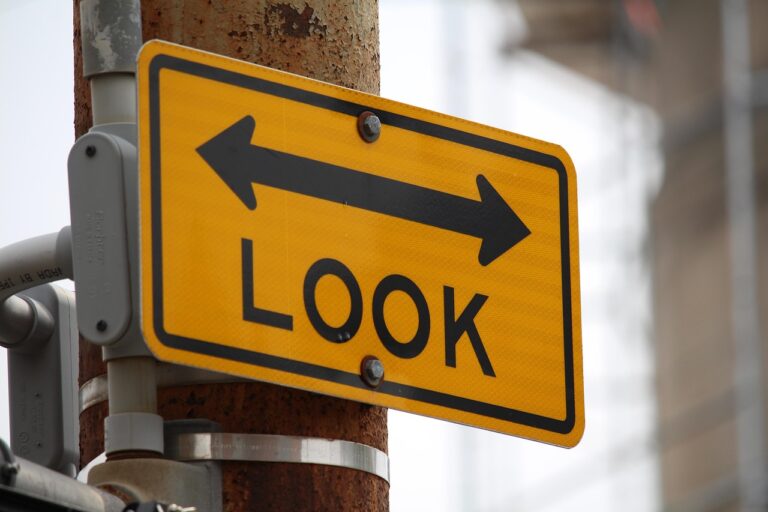
Secretary Marco Rubio at a press availability in Brussels, Belgium, April 4, 2025. (Official State Department photo by Freddie Everett)
Brussels: Today, China revealed a new 34% tariff on all U.S. goods, effective April 10, which sent shockwaves through global markets that were already struggling from United States President Donald Trump’s tariff announcement on April 2, 2025. This included a 10% tariff on all imports starting April 5 and potential tariffs of up to 54% on China. In response to the turmoil, U.S. Secretary of State Marco Rubio took to NATO Headquarters in Brussels to address the situation just hours later.
With Wall Street tanking—S&P 500 futures were down 4% by morning, and the Dow dropped 1,400 points the prior day—Rubio insisted markets would adjust once rules were clarified. He downplayed allied fears—Canada’s 25% duties on U.S. autos and the EU’s mid-April retaliation threat on $28 billion in U.S. goods—claiming the U.S. must reclaim manufacturing might, even as journalists pressed on economic strain hobbling NATO defence funds.

At the NATO headquarters today, Secretary of State Marco Rubio came with a message: the old rules are dead, the U.S. is rewriting the game, and everyone—especially Europe—better figure out how to play along.
The spark? President Trump’s latest tariff bombshell, which Rubio gamely defended as markets worldwide convulsed for a second straight day.
“Their [Europe’s] economies are not crashing,” Rubio insisted, swatting down a reporter’s claim like a fly at a barbecue. “Their markets are reacting to a dramatic change in the global order in terms of trade,” he insisted.
Yet, stocks are tanking, and the consensus is clear: these tariffs have blindsided investors and allies alike.
Picture this: the world’s economic titans hunched over a battered table, cards splayed out, chips stacked high, and the air thick with tension. That’s the scene unfolding right now, April 04, 2025, as a seismic shift in global trade rewrites the game’s rules. Forget the old playbook—free markets, tariffs, and handshake deals brokered over steak dinners. This is a new beast, raw and unpredictable, driven by necessity, tech, and a few wildcards nobody saw coming.
Nations aren’t just rebuilding—they’re rearming, economically speaking. The U.S., China, and the EU aren’t content to rely on each other anymore; they’re carving out their own turf. The buzzword on everyone’s lips is “nearshoring,” but it’s more than a trend—it’s a survival tactic. Mexico’s industrial parks are humming, Vietnam’s ports are clogged, and Germany’s throwing cash at its own factories like it’s 1949 all over again. Why? Because when the chips are down, you don’t bet on a neighbour who might lock their doors.
Then there’s the tech angle, and it’s a doozy. Semiconductors aren’t just a commodity anymore; they’re the new oil. Taiwan’s still the kingpin, but the U.S. is flexing with the CHIPS Act, pumping billions into homegrown fabs. China’s not sitting idle either—they’re stockpiling and innovating, even if it means bending a few WTO rules. The twist? Quantum computing’s looming on the horizon, and whoever cracks that nut first could hold the whole deck. Trade isn’t just about goods now—it’s about who controls the future.
Rubio’s stance was defiant today: this isn’t a misstep, it’s a deliberate reset. He framed the tariffs as a corrective to a trade system that’s left the U.S. as “the largest consumer market in the world”, exporting only services while China “floods and distorts markets.” The market chaos, he argued, is just growing pains—companies tied to China-centric production are taking hits, but they’ll adapt once the new rules are clear.
The trade war’s scope has widened fast. China’s retaliation, mirroring Trump’s 34% hike atop existing 20% duties, bans U.S. firms like Boeing from its market.
This isn’t just about the U.S. slapping extra costs on Chinese goods—though Rubio didn’t mince words about Beijing’s export obsession and market-distorting tricks. It’s a full-on reset, he argued, aimed at dragging America back to its manufacturing heyday. “We can’t continue to be a country that doesn’t make things,” he said.
Reporters pressed Rubio hard—how are NATO allies supposed to pony up for defence when their markets are bleeding out? His answer was a shrug and a reality check: businesses will adapt once they know the new rules.
It’s cold comfort for a continent already jittery about Trump’s unpredictability. Denmark’s PM even piped up, fuming over loose talk of Greenland’s independence and U.S. muscle-flexing—Rubio brushed it off, pinning the blame on Greenlanders’ own restlessness and a lurking Chinese shadow. Allies, it seems, are expected to grin and bear it.
Canada’s levies hit U.S. carmakers like Ford, facing $2 billion in added costs. South Africa’s exports—31% tariffs—signal Africa’s losses, and Nintendo delayed its Switch 2 U.S. preorder over Asian supply chain hits.
Rubio sidestepped these, pushing NATO toward a 5% GDP defence spend, citing U.S. Red Sea efforts against Houthis (25% tariffs on Iran) as proof of uneven loads. Denmark’s ire over Greenland talks, linked to a 10% tariff threat, a deflection to local unrest and China’s shadow.
The trade shakeup’s ripple effects don’t stop there. Rubio’s remarks hint at a broader geopolitical chess match. Take Russia-Ukraine: he’s cautiously optimistic about ceasefire talks, but the clock’s ticking—weeks, not months, he says—before the U.S. calls Putin’s bluff. If peace fails, expect trade leverage (think sanctions) to tighten. Then there’s Iran and the Houthis—Rubio touted U.S. airstrikes in the Red Sea as a global public service, keeping shipping lanes open while daring richer nations to chip in.
It’s a trade order where security and commerce bleed into each other, and America’s not shy about flexing both.
Rubio gave Russia-Ukraine talks weeks to prove peace, amid energy site strikes and spring offensive fears, warning of sanctions if stalled. Journalists raised U.S. travel deterrence and Myanmar aid gaps; he dismissed both, focusing on national priorities. His defense hinged on U.S. renewal, but China’s countermoves, the EU’s looming steel tariffs, and a projected 0.8% U.S. GDP drop over a decade undercut his stance. He held firm—yet with $3.2 trillion in tariff revenue at stake and markets in freefall, his assurances leaned on faith over evidence.
Rubio’s case rested on a vision of U.S. resurgence, but cracks showed. His trade defence assumed market resilience unproven against China’s countermeasures or EU threats of mid-April retaliation on $28 billion in U.S. goods. His NATO push ignored allies’ fiscal strain—Germany’s exports to the U.S., hit by 20% tariffs, prop up its budget. On Russia, his timeline held logic, yet ongoing violations muddied his hope. He projected control, but the trade war’s scope—$2.2 trillion in North American trade alone—left his arguments stretched.
The US Secretary of State’s Brussels performance was less a diplomat’s dance and more a prizefighter’s stance: the U.S. is setting the terms, and the world can either step up or step aside.
Yet risks loom. Alienating Europe with tariffs and Greenland rhetoric could fracture NATO unity. Misjudging Russia’s intentions might escalate tensions at a fragile moment. And Rubio’s dismissal of humanitarian critiques (e.g., Myanmar aid delays blamed on USAID cuts) suggests a narrower focus on U.S. interests that could erode soft power. For now, Brussels saw a Secretary of State playing offense—whether the world catches up or pushes back remains the question.
– global bihari bureau





